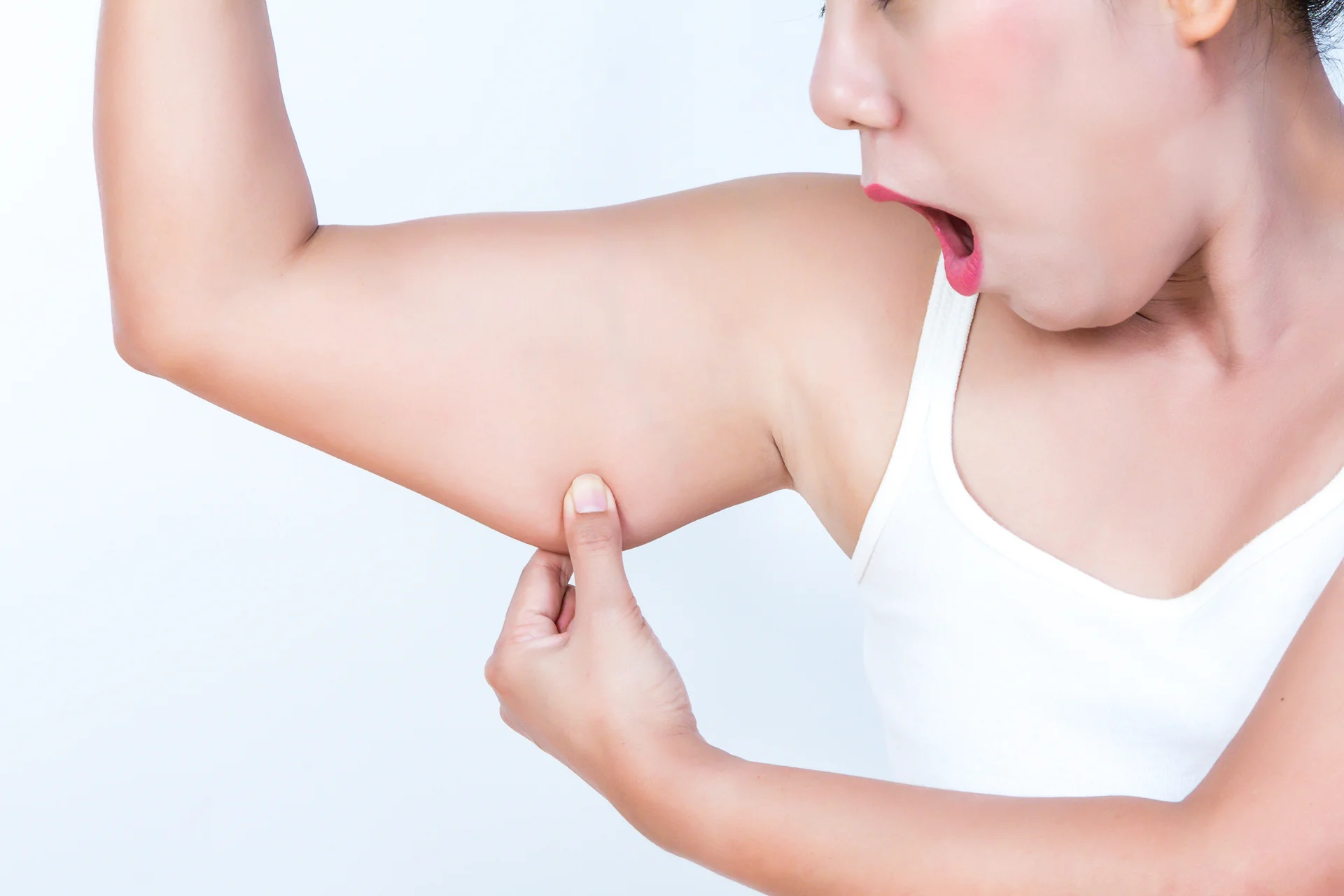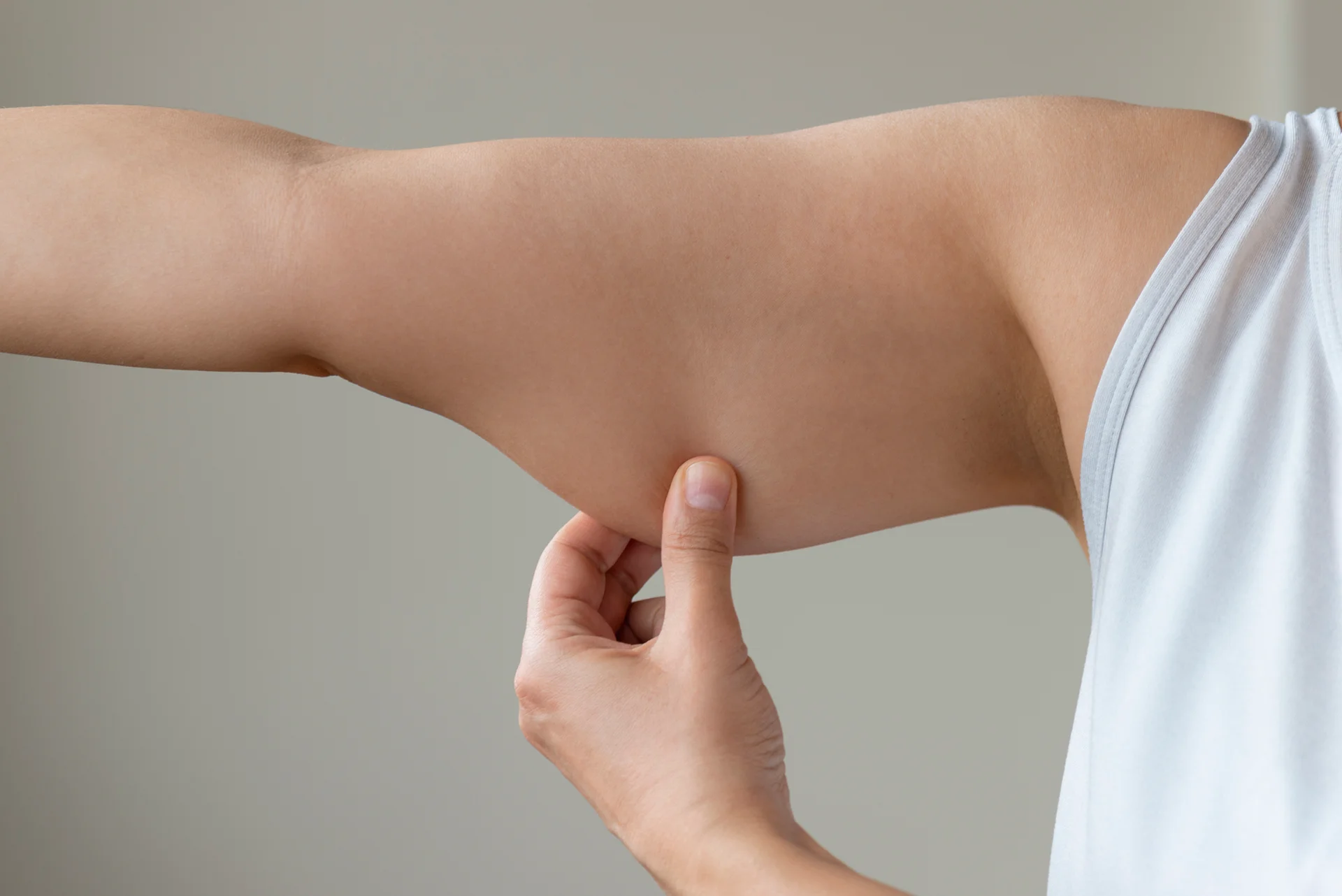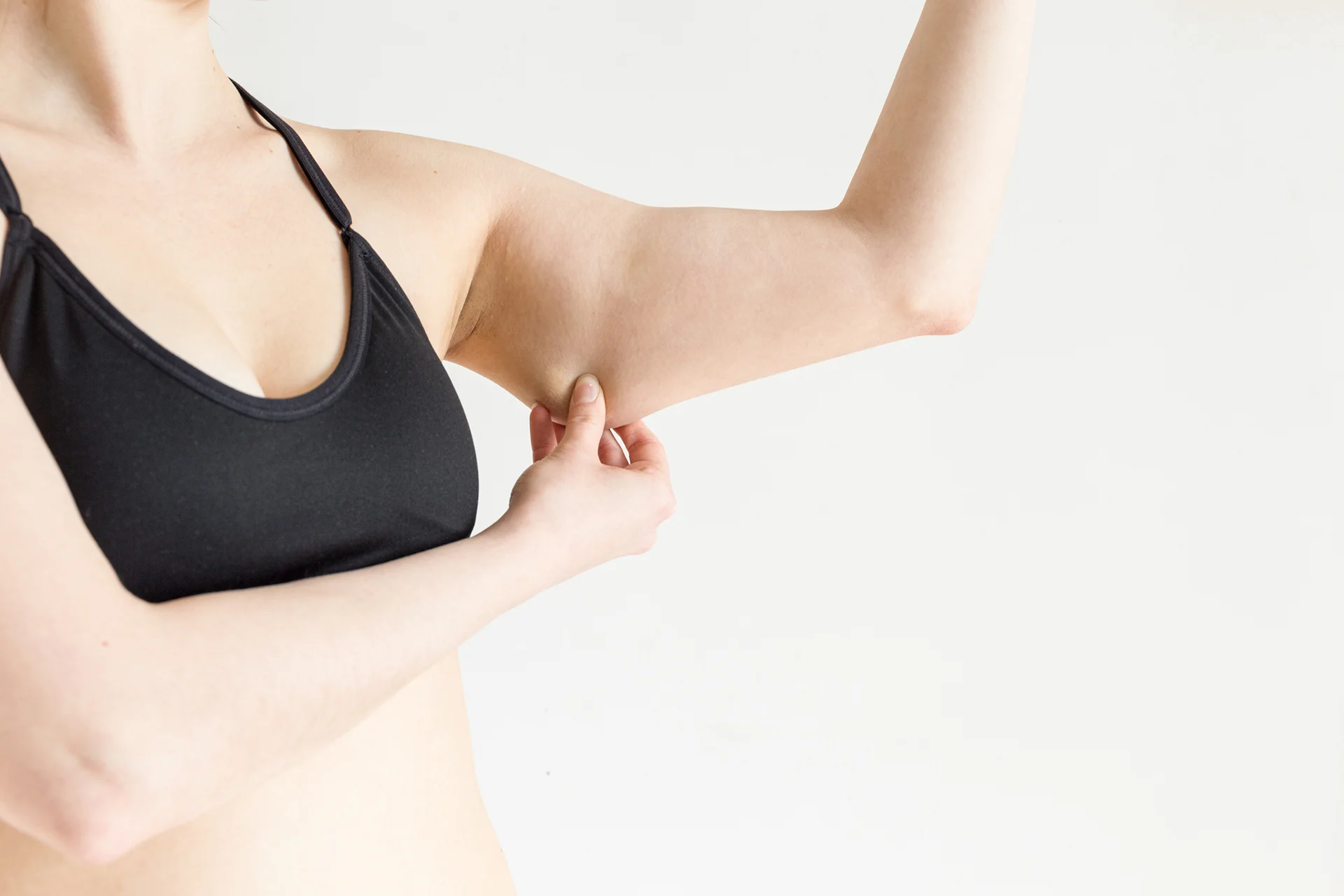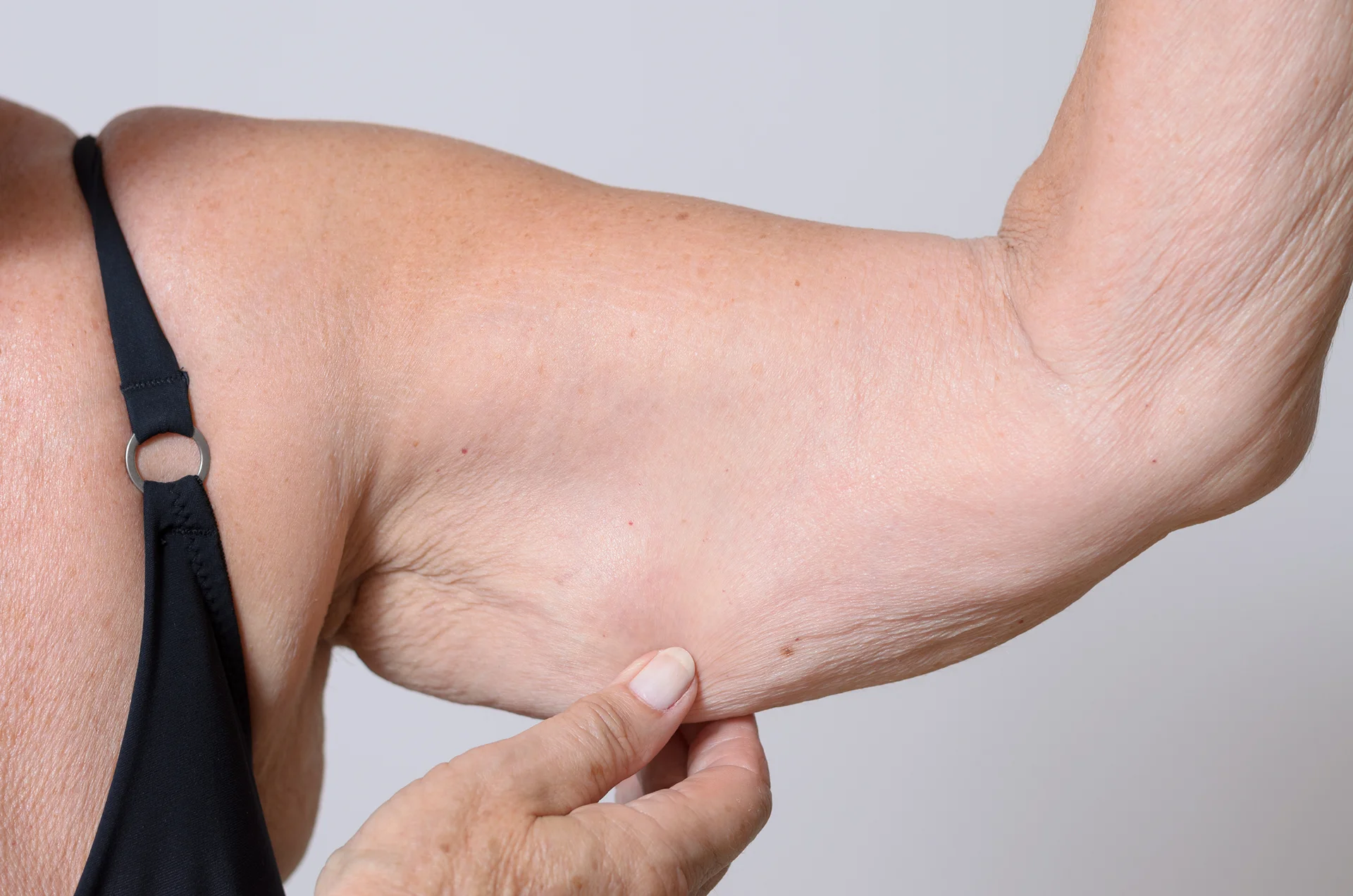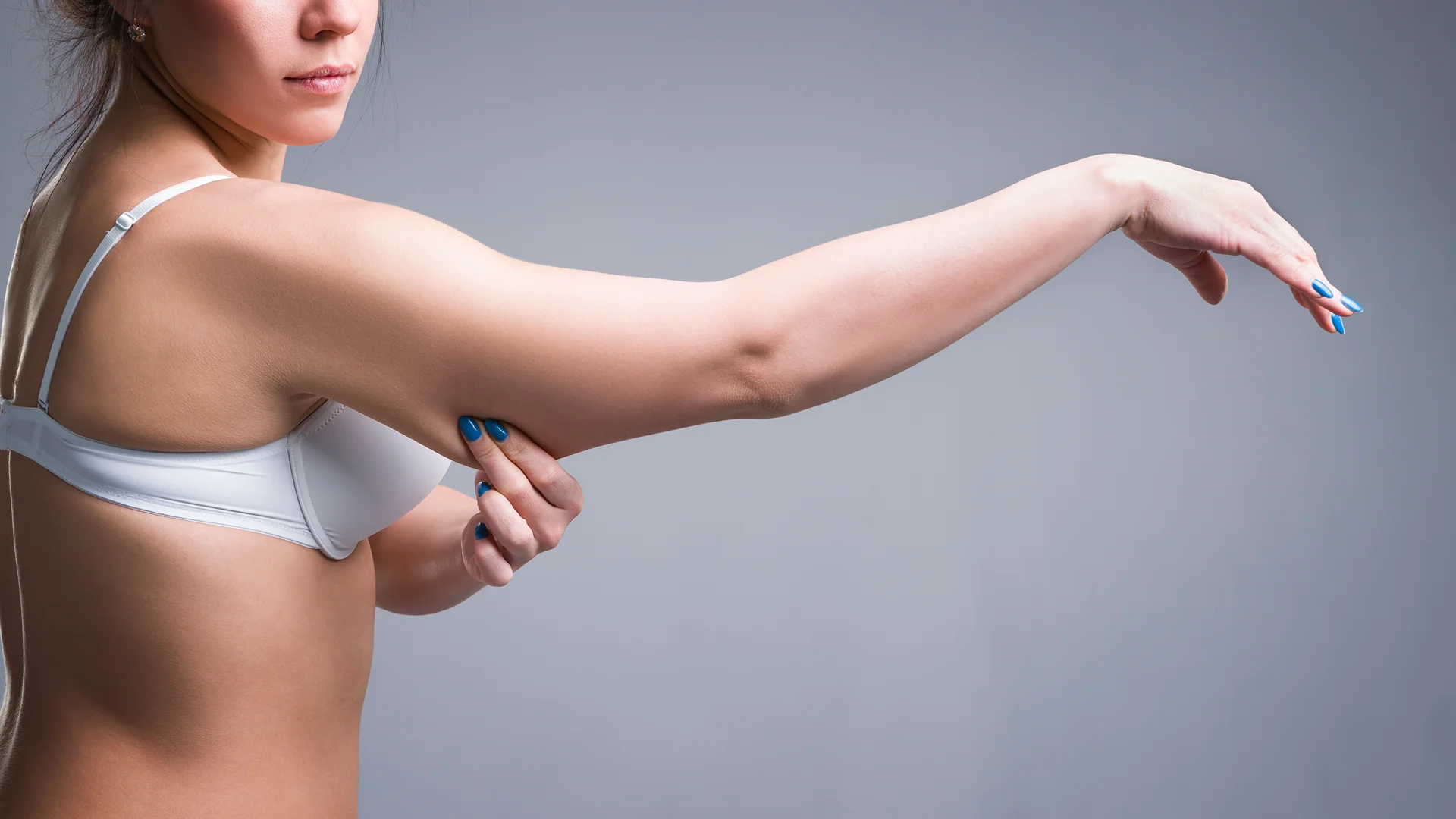Achieve Your Dream Arms – Without the Swelling and Pain of Lymphedema
Have you been considering brachioplasty (arm lift surgery) as a way to revitalize sagging, irregular skin and achieve beautifully contoured arms? This transformative procedure can provide dramatic improvements, enhancing your arm aesthetics and boosting confidence.
However, like any surgery, brachioplasty does come with risks like infection, scarring, and swelling. One potential complication to be aware of is lymphedema – a buildup of fluid that causes swelling and discomfort in the arm.
While lymphedema can be alarming, when identified early it is very manageable with proper treatment and care. At Dr. Darren Smith’s practice, your surgical experience is handled with incredible precision, artistry and support.
We want you to understand lymphedema risks and recovery so you can make fully informed decisions and achieve the harmonious, natural-looking results you deserve.
What is Lymphedema?
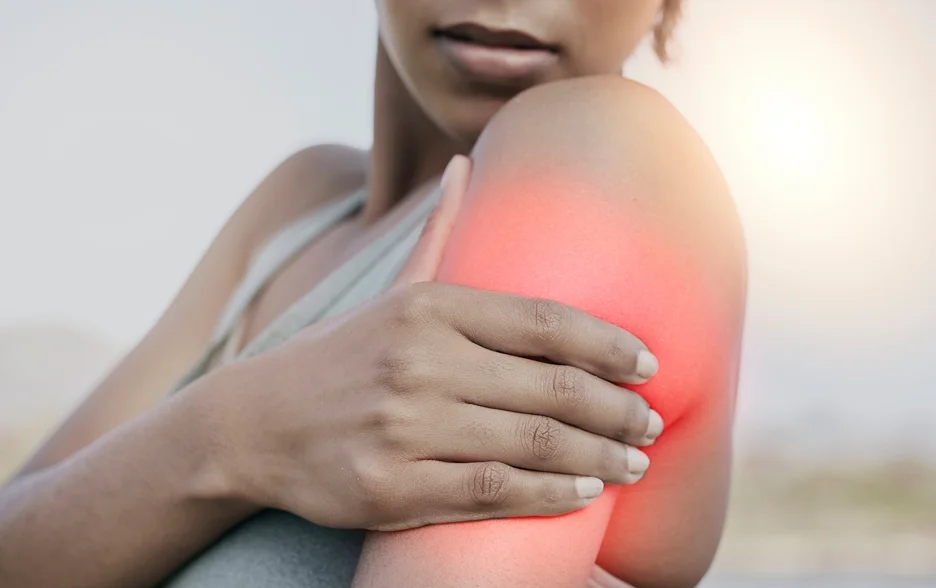
Lymphedema is a buildup of fluid that causes swelling, typically in the arms or legs.
It results from damage to the lymphatic system, a network of vessels and nodes that drain excess fluid from tissues.
Lymphedema can occur after node removal during procedures like brachioplasty when lymph drainage pathways are disrupted. The swelling is usually chronic but manageable with early intervention.
What are the symptoms of lymphedema after brachioplasty?
Lymphedema causes fluid buildup, leading to swelling, tightness and heaviness in the arm. This can create a feeling of aching, tingling or numbness.
You may experience hardness or thickening of the skin. Visible swelling may occur, along with loss of mobility in the wrist, elbow or shoulder joints. Decreased arm function and stiffness are also common. Skin may take on a reddened appearance at times.
Symptoms tend to develop within weeks or months after surgery. But mild lymphedema may not have pronounced symptoms. Only visible swelling and measurements may show fluid buildup.
Moderate lymphedema causes noticeable swelling that subsides with elevation. In severe cases, significant swelling and skin hardening can impair arm mobility. Symptom onset, duration and severity vary greatly between individuals.
What causes lymphedema after brachioplasty surgery?
Brachioplasty involves removing excess skin and tissue from the arms. For some patients, this can disrupt normal drainage in the lymphatic system – a circulatory network containing lymph nodes and vessels. Lymph fluid carries waste, nutrients and immune cells throughout the body. When vessels and nodes are damaged, fluid can accumulate.
Several factors can contribute to impaired lymph drainage after brachioplasty:
- Removal of lymph nodes during surgery. This decreases drainage capacity.
- Scarring and trauma to remaining lymph vessels. This obstructs proper drainage, causing backup.
- Inflammation or infection. This overwhelms lymph drainage.
- Venous obstruction from scar tissue pressing on veins. This hinders circulation.
- Risk factors like obesity, radiation history, past arm infections or injuries. These increase susceptibility to drainage issues.
With meticulous surgical technique we aim to limit lymphatic trauma. But some impairment can still occur since lymph nodes are closely intertwined with arm tissues that must be removed. The good news is lymphedema is very manageable when promptly diagnosed and treated.
How can lymphedema be prevented after brachioplasty?

While not always preventable, we take every precaution to minimize lymphedema risk. Our detailed instructions help patients protect surgical results and aid proper healing:
- Follow our arm elevation, movement and compression garment protocols to stimulate lymph flow and drainage.
- Attend all recommended physical therapy sessions to improve mobility, circulation and drainage.
- Monitor for signs of infection – a key trigger for lymphedema. Seek prompt treatment with our office if needed.
- Maintain a healthy weight and lifestyle. Obesity is linked to higher lymphedema risk.
- Avoid restrictive clothing or jewelry that can constrict arms. This helps lymph flow freely.
- Use caution with future arm injections, blood draws or pressure. Avoid trauma to at-risk areas.
- Refrain from activities that over-exert arms during recovery. Follow our graduated timeline for resuming normal activity.
Diligent follow-up care and early lymphedema management are vital to minimizing severity. Patients who carefully adhere to our post-operative instructions have the best outcomes. Our team provides constant guidance so you can recover smoothly.
How is lymphedema after brachioplasty treated?
If lymphedema does develop, various effective treatments can provide relief and control symptoms:
| Treatment Method | Description |
| Manual Lymph Drainage (MLD) Massage | A light, rhythmic technique to stimulate lymph vessel contraction and fluid drainage. Our therapists are experts in MLD for the arms. |
| Compression Garments and Bandages | Helps press fluid from tissues and limit re-accumulation. Must be properly fitted and worn diligently. |
| Exercises and Stretches | Improves flexibility and promotes circulation and drainage. |
| Skin Care | Keeps skin healthy and avoids infections that can trigger swelling. |
| Medications | Diuretics remove fluid buildup. Antibiotics treat infections. |
| Complete Decongestive Therapy (CDT) | Combines MLD, compression, exercises, and skin care for intensive reduction and control of lymphedema. |
| Additional Surgeries | In severe, refractory cases, surgeons may opt to reconstruct lymph vessels to improve drainage. |
Our integrated care team develops customized lymphedema treatment plans and provides ongoing support for resolution.
Early intervention is key – when treated promptly, symptoms can often be reduced within weeks. With diligent management, many patients see significant improvement within a few months.
What does recovery and outcomes look like after lymphedema?
With proper treatment, most swelling and firmness from lymphedema resolves within 6 months of brachioplasty surgery.
Through complete decongestive therapy we aim for maximal reduction in limb volume and symptoms. This helps restore mobility and arm function. Some skin firmness or discoloration may remain long-term when severe swelling was present. With self-care and compression garments, many patients keep lymphedema well-controlled. Recurrence is possible if at-risk activity levels are resumed.
We strongly emphasize diligent at-home care and therapy adherence for optimal outcomes. This empowers patients to take an active role in their recovery. Combined with our surgical artistry and precision, our full-spectrum support helps patients achieve their aesthetic goals with satisfying, lasting results.
The Takeaway
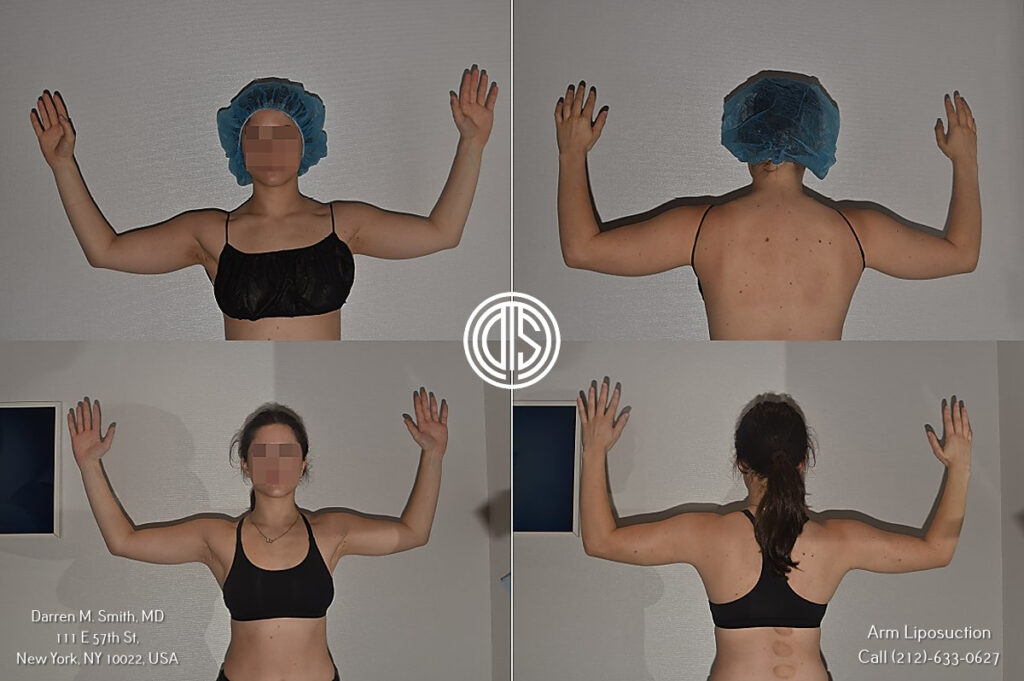
At Dr. Darren Smith’s practice, your satisfaction and safety are paramount. We take great care to minimize procedure risks and set clear recovery expectations. Lymphedema can occur after brachioplasty but is very manageable when treated early and properly. We provide extensive guidance and resources to support you through every step.
If you proceed with this transformative surgery, you can rest assured our experts will make your aesthetics and confidence their masterpiece, crafted with painstaking artistry and care.
Please reach out with any questions or to schedule your personalized consultation. We look forward to empowering your most harmonious, natural-looking results.
